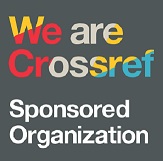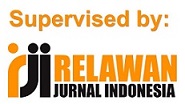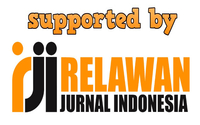UNDERSTANDING LEARNERS’ INCONSISTENCIES WITH THE ‘O’ VOWEL AND ‘O-KAR’ IN BANGLA LANGUAGE
Abstract
Keywords
Full Text:
PDFReferences
Anderson, J. D. (1917). The Phonetics of the Bengali Language. Bulletin of the School of Oriental Studies, University of London, 1(1), 79–84.
Atkins, S., Jereme, C., & Nicholas, O. (1992). Corpus Design Criteria, Literary and Linguistic Computing, 7(1), 1-16. https://doi.org/10.1093/llc/7.1.1
Bagchi, T. (1996). Bengali Writing. In Peter Daniels and William Bright (eds.), The World’s
Writing Systems, New York: Oxford University Press, 399–403. https://doi.org/10.7202/1084044ar
Barman, B., & Sircar, S. (2020). The role of diacritics in Bangla word recognition: Evidence from young readers. Journal of Child Language Acquisition and Development, 8(2), 45–62.
Basu, R. (1962). Chalantika: Adhunik Bangla Bhasar Abhidhan [Chalantika: Dictionary of Modern Bengali Language]. Kolkata: M.C. Sarkar.
Biswas, N. (2005). Bangla banan o uchharan: samasya o samadhaner upay [Bangla spelling and pronunciation: problems and solutions]. Bangla Bhasa Matri Bhasa [Bangla Language Mother Tongue], 79-86.
Chaudhuri, J. (1994). Bangla Academy Bangla Banan Abhidhan [Bangla Academy Bangla Spelling Dictionary]. Dhaka: Bangala Academy Press.
Dash, N. S. (2005). Methods in the madness of Bangla spelling: A corpus-based empirical investigation, South Asian Language Review, 14(2), 63-92.
Dash, N. S. (2006). Bahurupi Bangla Banan [Multifaceted Bangla Spelling]. Kolkata: Daksha Bharati.
Dash, N. S. (2011). A Descriptive Study of the Modern Bangla Script. Saarland: Lambert Academic Publishing.
Dash, N.S. (2018). Linguistic and Extralinguistic Factors behind Spelling Variation of Bangla Words. Language Forum, 44, 75-93.
David, A. (2015). Descriptive Grammar of Bangla. Berlin, München, Boston: De Gruyter Mouton. https://doi.org/10.1515/9781614512295
Ghosh, D. (1953). Bangla Bhasa O Banan [Bengali Language and Spelling]. Kolkata: Modern Book Agency.
Ghosh, M. K. (1994). Bangla Banan [Bangla Spelling]. Kolkata: Dey’s Publishers.
Khan, M. H. (2018). Bangla Orthography and Literacy Development: A Psycholinguistic Perspective. Dhaka: Dhaka University Press.
Khan, K. (2005). Bangla bhasar banan samskar: agun phele anc!? [Spelling reform of Bangla language: oven without fire?]. In Chakrabarti, Rabi and Kalim Khan (Eds.) Bangla Banan Bangla Bhasa [Bangla Spelling Bangla Language]. Kolkata: Kaurab Prakashani, 13-58.
Kolkata, U, P. (1936). Bangla Bananer Niyam [Rules of Bengali Spelling]. Retrieved from https://dsal.uchicago.edu/dictionaries/biswas-bangala/appendices/appendices.pdf
Mahalanabish, P. (1925). Chalti Bhasar Banan [Spelling of Colloquial Speech]. Kolkata: Prabasi.
Mamud, H. (2016). Bangla Lekhar Niyamkanun [Rules of writing Bengali, Reprint]. Dhaka: Protik Prakasana Sanstha.
Mandal, K. (2004). Ucchrinkhal banan: shrinkhal-bhanga shrinkhala (Indiscipline Bangla spelling: rule-breaking rules), Thirabijuri, 4(7), 97 101.
Mukherjee, A. (2005). Banglay Yuktabarna O Kichu Prasangik Prashna (Bangla Consonant Clusters and Some Relevant Questions). Bangla Bai (Bangla Book), 1-12.
Mukherjee, M. (2023). The influence of orthography on spoken word recognition in Bangla. Proceedings of Formal Approaches to South Asian Languages 12(1), 169-182. https://ojs.ub.uni-konstanz.de/jsal/index.php/fasal/article/view/291
Peereman, R., Dufour, S., & Burt, J. S. (2009). Orthographic influences in spoken word recognition: The consistency effect in semantic and gender categorization tasks. Psychonomic Bulletin & Review, 16(2), 363-368. https://doi.org/10.3758/pbr.16.2.363
Sapir, E. (1921). Language: An Introduction to the Study of Speech. New York: Harcourt, Brace & World.
DOI: https://doi.org/10.30743/ll.v9i1.10807
Refbacks
- There are currently no refbacks.
Fakultas Sastra
Universitas Islam Sumatera Utara (UISU), Medan
Jl. Sisingamangaraja Teladan Medan 20217
Telp. (061) 7869911, e-mail: language_literacy@sastra.uisu.ac.id









